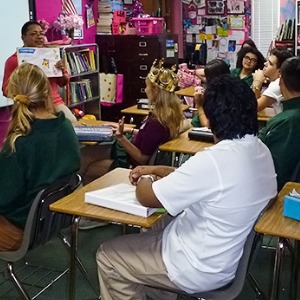The concept of learning
We share our concept of learning with animals, some plants, and more recently, with certain machines. However, this process is still by far the most developed in people. Simply, human life is defined by learning from the very beginning. When we crawl as babies, trying to stand up on our two feet, or as we spend days and nights pouring over books at school or university, when we attend courses, or try to learn the secrets of the craft from our older co-workers, we never actually stop learning. Although we are often unaware of this, each new experience in the store, gym, at work, in meetings with other people represents a potential learning opportunity for us.
This means that learning can be formal and informal. If we learn from experience, everyday situations and open contexts, it is informal learning. However, if we obtain knowledge at school, through structured courses, we are talking about formal learning. In any case: whichever type of learning we utilize, this process has a great impact on our life.
Simply put, the concept of learning plays a very important part in all stages of our life, helping us to adapt and creatively respond to the challenges posed by the environment.
But, what exactly is the learning process?
The definition of learning states that it is a process of acquiring new knowledge, skills, understanding, behaviors, values, beliefs, even affinities and inclinations. Hence, learning covers a very wide spectrum of things that make our life: from adopting customs, to mastering intellectual skills, accepting ethical principles and developing artistic taste.
Research from different disciplines, such as psychology, education, science, and neuropsychology agrees on one thing: there are several forms of learning. For example, learning can be the result of certain habits, classical conditioning, but also operant conditioning (reward and punishment) in both humans and animals. Although many see learning and play as two opposite concepts, associating the former with effort and boredom, and the latter with joy and entertainment, the truth may surprise you – learning can be the result of play in humans and intelligent animals.
The incorporation of play in the learning process is becoming increasingly popular in modern educational institutions, especially since the beginning of the rapid technological development. Namely, research has confirmed that educational video games have a great impact on learning, which is why they are increasingly used in primary and secondary school teaching. This application of video games is called edutainment, referring to the unique combination of learning and play, which has proved particularly effective in the acquisition of knowledge and skills of the 21st century.
Learning can be surface and deep. To understand the difference, remember learning a foreign language. If you didn’t use new words in everyday life, they would soon disappear from your memory, and this is an example of surface learning. However, if you were forced to use these words, e.g. if you lived abroad, they would stay with you for years, and this is an example of deep learning.
Although we identify the acquisition of new knowledge with a voluntary action, it may surprise you that we can learn things unconsciously. In fact, some research shows that people learn even during the prenatal period. So, the learning process is so important for life on earth that it even occurs in unborn babies. One thing is certain, as we learn, we change and become more mature. This is why learning is so important in education.
What is learning in education?
Nowhere is learning so all-pervading as in primary and secondary school. It is a period when children have to acquire a large corpus of knowledge of different subjects and areas that will enable them to continue their education, find a job and build a career. However, at the same time, they adopt numerous ethical, esthetic, social and other concepts. Simply put, learning in that period is most suitable for the acquisition of comprehensive knowledge which is the opposite of specialist, strictly focused knowledge acquired later at university, or through various formal and non-formal courses people attend when they want to improve their career.
So, learning in primary and secondary school is actually a moment when a child is introduced to the civilization to which they belong, and acquires knowledge, values and behaviors that will help them to creatively contribute to that civilization and find their own place in the world.
Hence, learning in education is inseparable from teaching. Schools are institutions designed specifically to facilitate knowledge acquisition, and teachers are those who need to transfer knowledge to their students. Therefore, teaching and learning are the essence of every school.
The process of acquiring knowledge, skills, behaviors and beliefs is far more efficient if the teacher is able to transfer them to children in an appropriate way. Motivation is crucial in this process. Namely, it has been shown that motivated people acquire knowledge much better and faster than those who lack motivation.
And motivation is nothing more than the ability to understand the meaning of what you are learning. For example, some people are motivated to learn in order to acquire new knowledge and skills that will help them improve their career, others are motivated by rewards, and some learn only to pass an exam. None of these factors should be neglected when it comes to learning, and the teacher should find out what motivates each of their students, so that they can arouse their desire to learn.
However, neuropsychologists have discovered that one of the strongest types of motivation to learn that helps people acquire knowledge and skills over a long period is – intrinsic motivation. Intrinsic motivation means that you learn out of curiosity, or because you are interested in the subject you are learning about, or because you enjoy intellectual challenges. Students who are intrinsically motivated don’t think about things outside of the subject of learning, such as rewards. They are entirely focused on knowledge and derive their satisfaction from a successfully completed task, achieving the best possible results.
Therefore, the main objective of every teacher is not only to instill knowledge and skills into their students, but to kindle their love for learning that will enable them to practice lifelong learning.
What do we mean by lifelong learning?
We have already mentioned that learning is a process we practice formally or informally, consciously or unconsciously, all our lives. However, the concept of lifelong learning is something else. It involves a voluntary action, i.e. lifelong commitment to the acquisition of new knowledge and skills in order to develop as a human being in different fields.
In the 21st century, defined by dynamic technological development and global availability of information, a century of change and unpredictable future, one thing is certain – knowledge becomes obsolete quickly.
Therefore, anyone who wants to be successful at their job, or who simply wants to be informed, must continuously learn and improve themselves. Only that way can a person be up-to-date with the changes brought about by the modern age. That is why every individual must nurture lifelong learning, and that requires motivation, but also ability that can be learned. Therefore, modern schools have a s special task:
A good school must teach its students how to learn
This may sound strange, but human beings don’t only possess the ability to learn skills, knowledge and behaviors – we can also learn how to learn. This is exactly one of the most important lessons a child learns at school. When we master the learning technique of filtering and evaluating information, when we learn how to look for and check facts, master the means and materials for knowledge acquisition, and when we finally awaken a lifelong desire and curiosity in ourselves, only then will we be ready and able to learn independently, even after completing our formal education.
Good private schools have long since understood that education has changed. It is impossible to predict what the future will be like at this moment, what professions will disappear and what new jobs will arise. Therefore, when preparing children for the future, such schools actually prepare them to deal with a variety of unpredictable contexts. And the way to do it is to teach them to acquire 21st century knowledge and skills at any time and any place.
In other words, children who attend these schools have the opportunity to experience some of the best learning practices that they can later implement on their own in different aspects of their professional and social life.
Best learning practices
























